This step by step diy woodworking project is about how to build a reloading bench. This detailed workshop project features detailed instructions and diagrams about building a reloading bench. In order to get a professional result and to keep the costs under control, we recommend you to plan the project from the very beginning and to adjust its size and design to suit both your needs and budget. Create rigid joints and add glue to create a durable structure.
Before starting the actual construction project, we recommend you to plan everything, as to save money and to keep the costs under control. Adjust the size and the design of the reloading bench to suit your needs. In addition, we recommend you to invest in high-quality materials, such as pine, redwood or cedar, as they have a nice finish and are highly durable, especially in a humid environment.
If you don’t have a rich expertise in woodworking field, you should ask a friend to give you a hand with the project. There are many things that you could go wrong, so make sure you plan everything and invest in quality materials. Select the lumber with attention, making sure the components are perfectly straight and in a very good condition. Use a carpentry square to check if the corners are right-angled. See all my Premium Plans in the Shop.
Made from this plan
How to build a reloading bench

Building a reloading bench
Materials
- A – 2 pieces of 2×6 lumber – 48″ long, 4 pieces – 21″ long 2xFRAME
- B – 4 pieces of 4×4 lumber – 48″ long LEGS
- C – 1 piece of 3/4″ plywood – 48″x24″ long 2xCOUNTERTOP
- D – 2 pieces of 2×10 lumber – 43″ long, 1 piece – 51″ long TOP
- E – 1 piece of 2×10 lumber – 48″ long, 2 piece – 23 1/2″ long, 2 pieces – 14 1/2″ long, 1 piece – 16″ long PARTITIONS
- F – 1 piece of perforated metal mesh – 44 1/2″x51″ long BACK
- 4 pieces of 2×6 lumber – 8 ft
- 2 pieces of 4×4 lumber – 2 ft
- 1 piece of 3/4″ plywood – 4’x4′
- 3 pieces of 2×10 lumber – 8 ft
- perforated mesh – 4’x6′
- 2 1/2″ screws
- 1 1/4″ screws
- glue, stain
- wood filler
Tools
- Safety gloves, glasses, Miter saw, jigsaw
- Chalk line, tape measure, spirit level, carpentry pencil
- Drill machinery and drill bits
Tips
- Apply several coats of wood stain to the wooden components
- Fill the holes with wood filler and smooth the surface
Time
- One Day
Related
Building a reloading bench
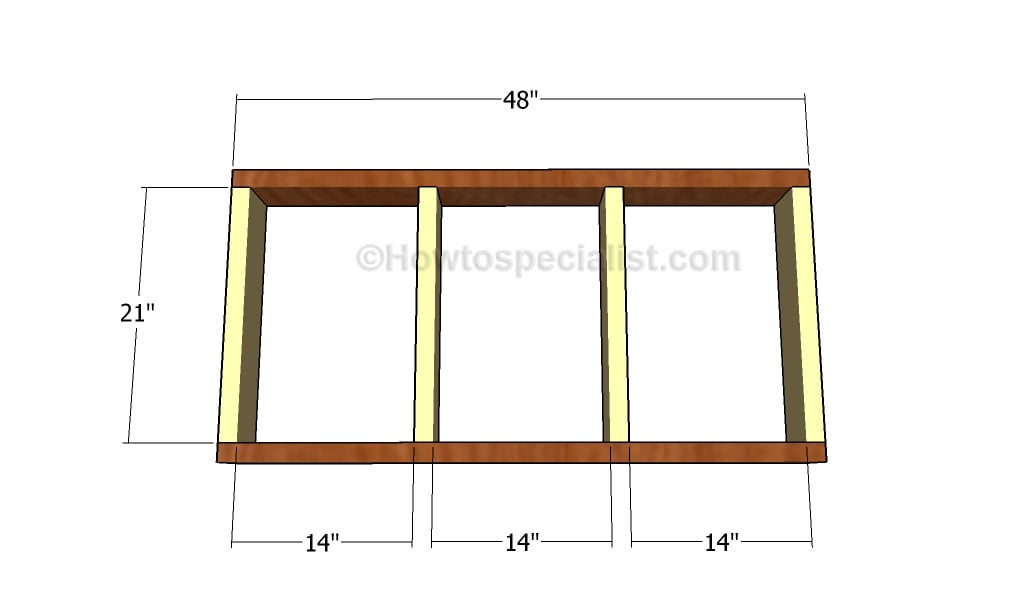
Building the frames
The first step of the woodworking project is to build the frames for the reloading bench. As you can easily notice in the diagram, we recommend you to build the components out of 2×6 lumber. Take accurate measurements and drill pilot holes through the perimeter components, before inserting the 2 1/2″ screws into the perpendicular components.
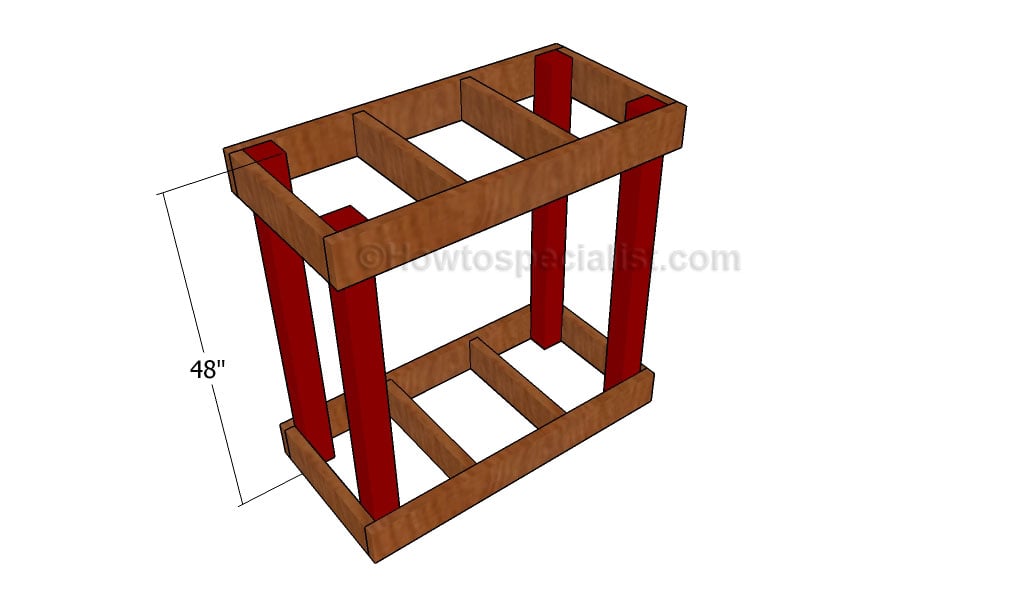
Building the frame of the reloading bench
The next step of the woodworking project is to attach the wooden frames to the four legs of the reloading bench. As you can easily notice in the diagram, we recommend you to drill pilot holes through frames and to insert 2 1/2″ screws into the legs. Make sure the corners are square and add glue to the joints, in order to create a rigid structure. Plumb the legs with a spirit level before inserting the screws.
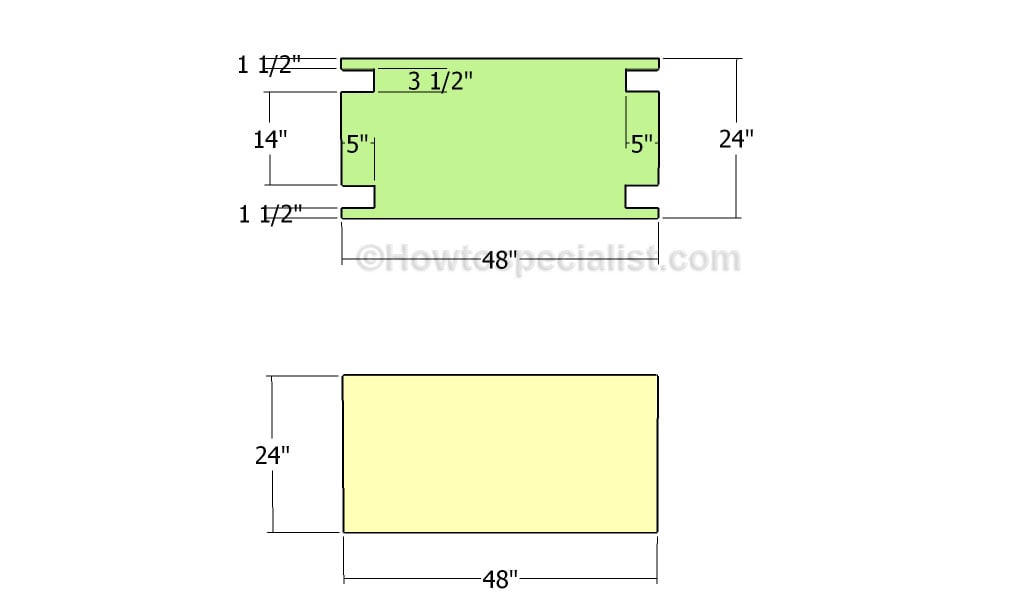
Building the tabletops
Continue the woodworking project by building the tabletop and the bottom shelf of the reloading bench. Work with attention and with great judgement, if you want to get the job done in a professional manner. Mark the cut lines to the bottom shelf 3/4″ piece of plywood. Use a good jigsaw to create the notches and smooth the cut edges with sandpaper. Glue together two identical components in order to get a 1 1/2″ plywood piece.
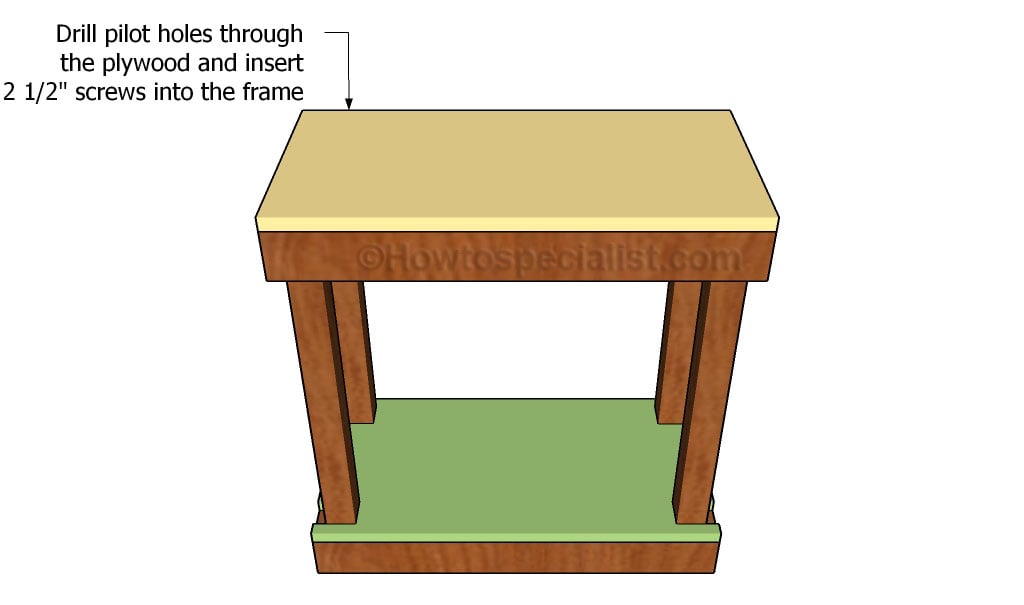
Fitting the tabletop
The next step of the woodworking project is to attach the plywood pieces to the wooden structure of the reloading benches. Smooth the cut edges of the plywood components and drill pilot holes before inserting the 2 1/2″ galvanized screws into the frame, to prevent the wood from splitting. Don’t forget to countersink the head of the screws.
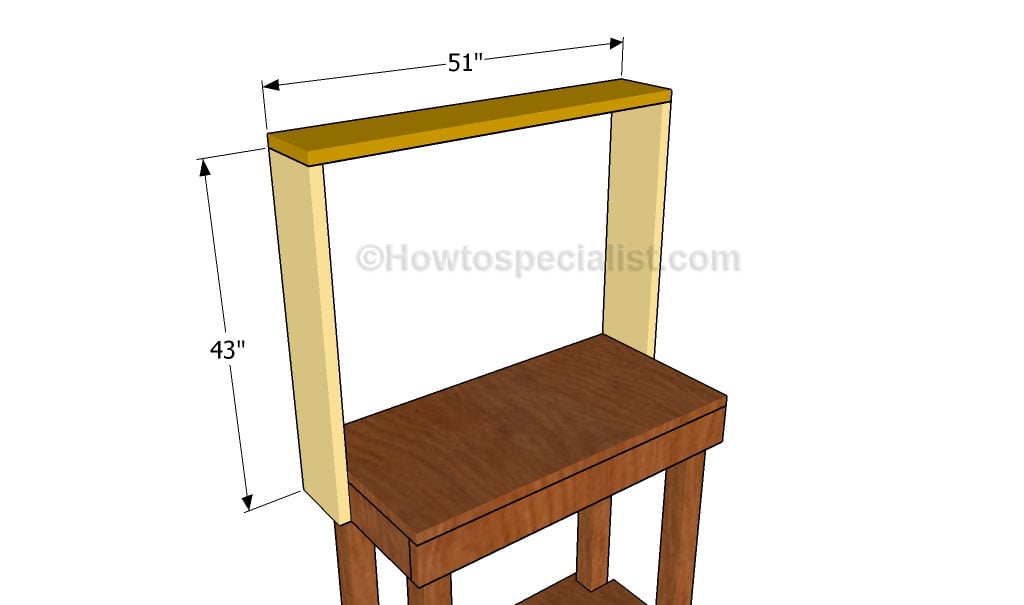
Building frame of the bench shelves
If you to add more storage space to the reloading bench, we recommend you to build wooden shelves to the back of the reloading bench. Cut the components out of 2×10 lumber and smooth the cut edges using fine-grit sandpaper. Drill pocket holes along the top edges of the vertical components and insert 2 1/2″ screws into the top component. In addition, make sure the corners are perfectly plumb and use a spirit level to check if the top component is perfectly horizontal. Drill pilot holes through the side components and insert 2 1/2″ screws into the top frame of the reloading bench.
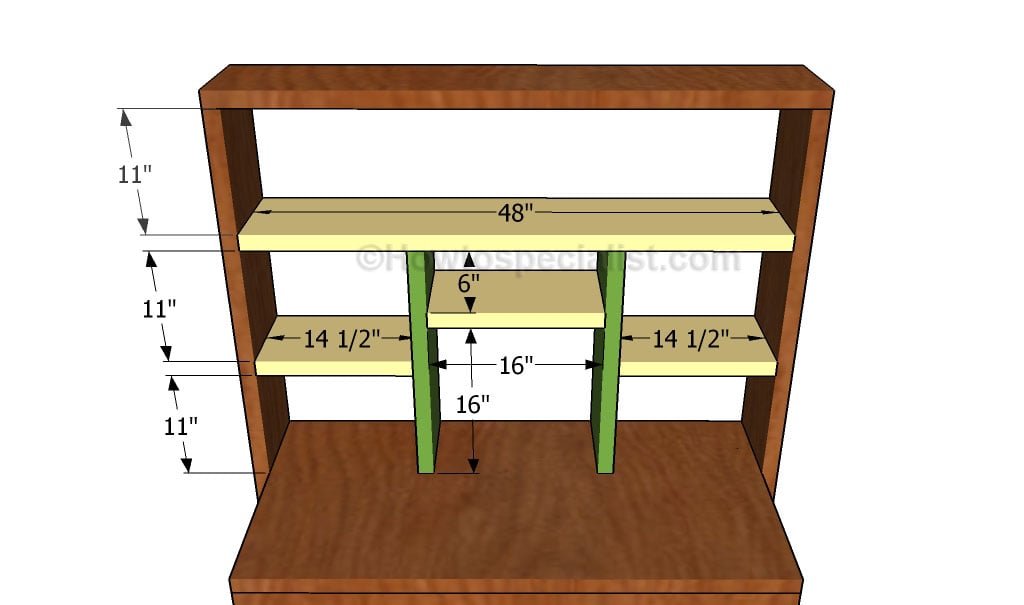
Attaching the shelves
Next, you need to build the partitions for the back shelves. Take accurate measurements and cut the components out of 2×10 lumber. Smooth the cut edges, remove the residues with a vacuum cleaner and drill pocket holes at both ends of the components. Fit the slats into place and secure them to the structure by using 2 1/2″ galvanized screws. Make sure the corners are square and add glue to the joints, in order to get a professional result.
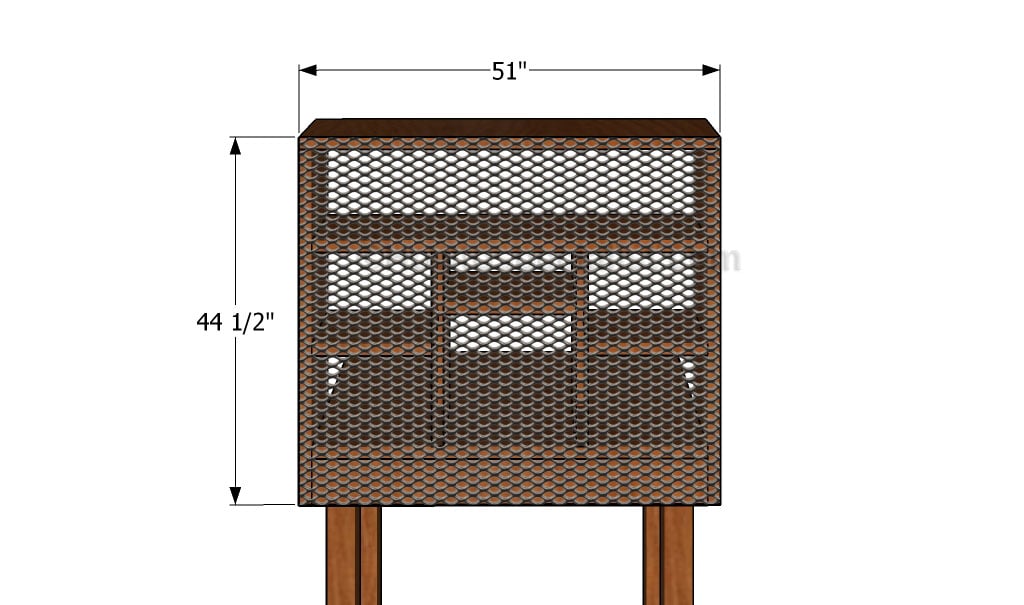
Attaching the perforated panel
If you want to get a professional result, you could attach a piece of perforated metal mesh to the back of the reloading bench, as described in the diagram. Work with attention and invest in high quality materials, such as stainless steel screws.

How to build a reloading bench
Last but not least, you need to take care of the final touches. Therefore, you need fill all the holes with a good filler and let the compound to dry out properly, before sanding the wooden surface with 120-grit sandpaper.
Thank you for reading our article about how to build a reloading bench and we recommend you to check out the rest of our home improvement projects. Don’t forget to share this projects to your friends, using the social media widgets, if you’ve found it useful. LIKE us on Facebook to be the first that gets our latest updates.

2 comments
I’m currently in the process of constructing a similar reloading bench, and 36″ seems to be a much more usable bench height. I believe that you’ll find that 48″ is just a bit tall for most people’s preferences. 48″ is almost chest height on your average sized person.
Thanks for the feedback. I’d love to see your project once it’s done.